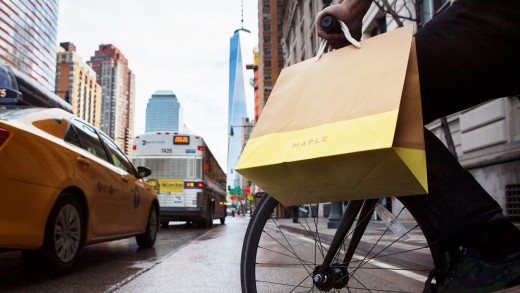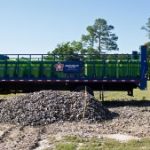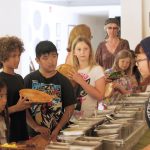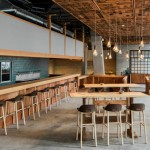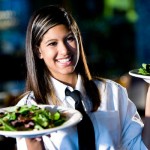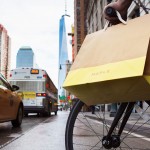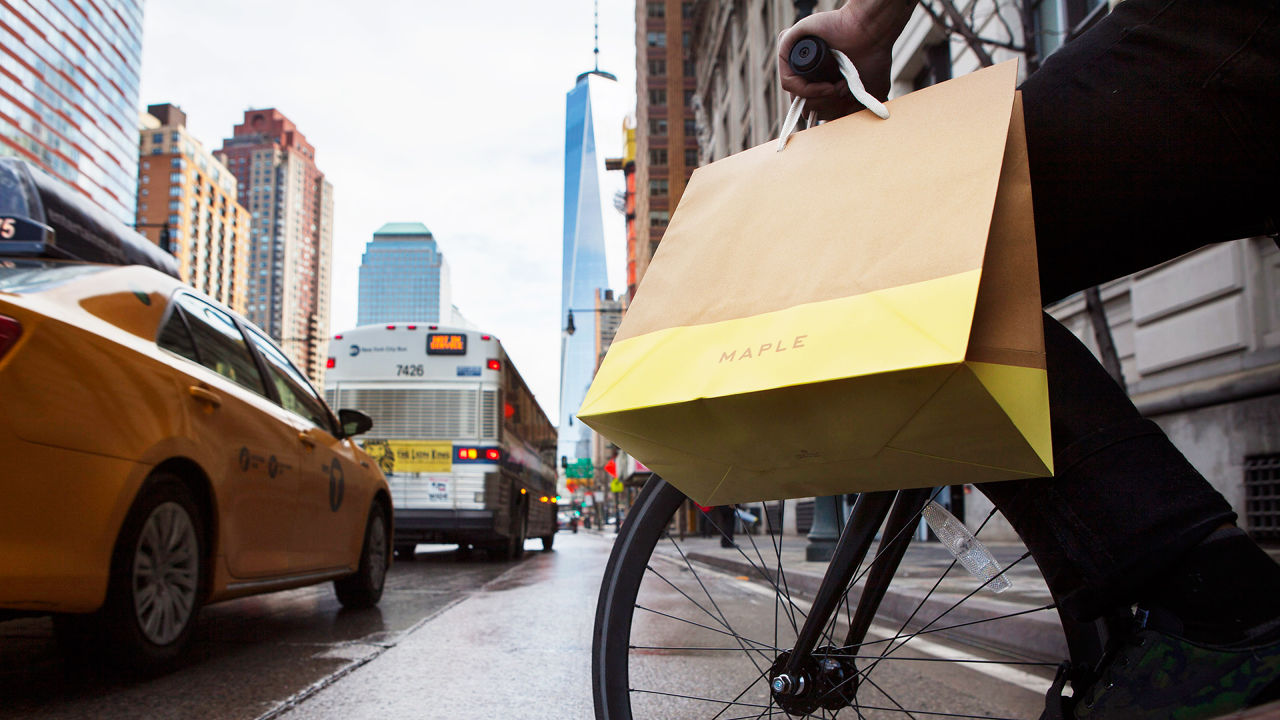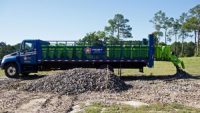at the back of The Scenes At Maple, The David Chang Backed, delivery-simplest Restaurant Of the long run
within Maple’s $26 million quest to reinvent supply—wholesome, reasonably priced, chef-precious meals, quick—within the land of sad desk lunches.
April 28, 2015
“If I received this for deliverynodesimply arrived on the business place of work of Maple, a supply-handiest restaurant by which he’s an investor. “It’s one of the best temp. this is very laborious. You just don’t see even a actually good restaurant cook fish like this.”
it’s three weeks prior to Maple’s April 28 launch, and Chang is scooping up forkfuls of food from the first test delivery run. The provider, to start with, sounds like several of the dozen or so apps that already promise restaurant delivery in NY city or San Francisco: Press a button, meals presentations up. but whereas Seamless merely conveys your order to a restaurant, and startups like Postmates and DoorDash dispatch supply folks to select it up, Maple controls the whole process. It cooked the meals (three $12 options for lunch, three $15 choices for dinner, together with tax, tip, and delivery), constructed the app you use to put your order, and employed the supply man who brings it to you. it is, if you’re going to, a “full-stack” restaurant. Or, as Chang puts it, “the future.”

The unfold looks tasty. There are vegetarian inexperienced chili enchiladas, made with tortillas from a tortillaria in Queens and house-made enchilada sauce; gradual-cooked baked arctic char with an olive get pleasure from; and pepper-crusted pork tenderloin with sautéed Tuscan kale. “with a bit of luck this doesn’t taste gross,” CEO Caleb Merkl concerned as he pulled the containers kind supply baggage. “It’s the first day.” Maple’s govt chef, Soa Davies, in addition to writing two cookbooks and beginning her own trade, spent years as the top of menu research and development at three-Michelin-starred French seafood restaurant Le Bernardin. The meals definitely does not style gross.
nevertheless it’s not, Merkl decides, slightly excellent sufficient yet. “It’s almost certainly slightly bit less warm than it must be,” he says.
Down With Sub-Par Takeout
Delivered meals, according to the Restaurant advertising and marketing and supply association (RMDA), account for a 7% share of american food spending, with 26% of shoppers ordering supply or takeout as a minimum once every week. The internet, cellphones, and an “on demand” expectation have helped feed the growing category. Seamless started taking online orders for delivery back in 1999, and its competitor GrubHub launched in 2004. the 2 corporations merged in 2013 and collectively box about 200,000 orders in 800 cities day by day. delivery startups like Postmates, Wunwun, and DoorDash have further reworked the experience from a course of that once involved a phone quantity and a paper menu to only some taps of a smartphone. Sprig and SpoonRocket in San Francisco function in a similar way to Maple.
but as so much as ordering food for supply has advanced during the last couple of a long time, the restaurant itself has not, which may well be one purpose that many people—especially those outside dense city areas—still affiliate delivery principally with pizza and chinese language food. “when you order within the hole-in-the-wall chinese language restaurant, it’s the identical experience sitting on the sofa to your rental or eating on the restaurant,” Chang says. “however would you order fish at any restaurant? It’s regularly not accomplished neatly. and you’re ordering from a place that is making it to be served on a plate.”
via simplest cooking for delivery, Maple can boost recipes specifically to resist a new york bike trip—and hence, significantly fortify the possible deliciousness of the meal that arrives to your doorstep or droop. Fried meals, in Maple’s early checks, failed to arrive crispy. loose sauces migrated; tacos arrived taking a look extra like burrito bowls. So it adjusted its choices as a result. Maple’s focal point is on getting the food as fast as imaginable from oven to your door, as a result of supply just isn’t a side industry, it’s the one trade. Maple also avoids purchasing expensive actual estate, instead housing its stock and most of its kitchen house in an outdated Pfizer manufacturing facility in Williamsburg. it could possibly serve extra people with fewer staff, and the collection of dishes it sells just isn’t limited by a line that spills onto the sidewalk.
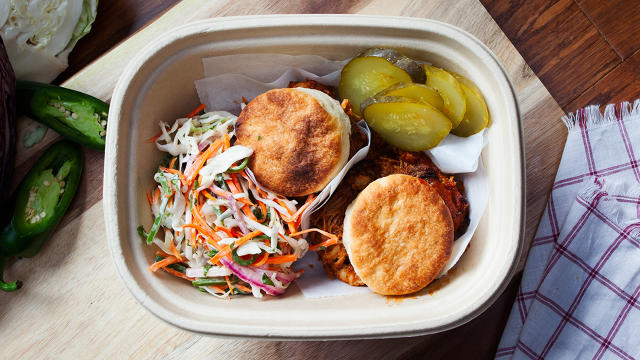
The tall order it has set for itself, in a metropolis brimming with sub-par takeout and soggy noodles, is wholesome, affordable, food that tastes good, delivered within half-hour. that is—as fast company discovered over the direction of several weeks shadowing the company prior to its launch—no small endeavor.
starting in July, Maple examined recipes, constructed apps, and employed a staff that grew from 50 to about 70 within the weeks sooner than launch, including programmers, branding consultants, delivery guys, and kitchen staff. It built a 5,000-sq.-foot industrial kitchen in Brooklyn, full with rapid prepare dinner expertise ovens and blast coolers, where a chef de delicacies, two sous chefs, eight line cooks, and a porter will work to prepare all the food. And it opened a distribution kitchen within the monetary District, the place a staff of about 30 will cook, gather, and dispatch foods. For the three weeks prior to launch, it ran your entire operation, with actual food, at full-scale, twice each day. a computer application positioned faux orders for patrons and requested delivery to randomly selected addresses from 30 local constructions in under a 1/2 an hour. “anything else longer that, and also you’re like, where is my food?” explains Maple’s cofounder, Akshay Navle.

Navle, Maple’s COO, scrutinized this entire manufacturing for cracks within the system—any certainly one of which can lead to the acquainted annoyances of supply (cold meals, lengthy waits, homely dishes). And there have been lots.
the issue that resulted in that lukewarm fish, as an example: Davies, who handled everything from writing and trying out the 270 recipes Maple developed before launch, to stylizing the meals for photographs, says the equipment within the new kitchen used to be, as expected, working in a different way than the tools Maple used earlier than the are living tests, creating about an eight-stage distinction from the previous take a look at kitchen. A measly eight levels is enough to throw the whole lot off.
“His expression is the very same expression that is on the face of any GM [general manager] that is about to open a restaurant,” Chang says, pointing to Navle. “It says, Oh my god, that is happening.”
Tilting At Chipotle
Eleven days before launch, Navle is leaning on the table, looking at his laptop’s on-screen agenda with the depth of any individual staring at a tennis match. Maple’s management team has gathered early for a gathering in the Williamsburg kitchen where Maple prepares meals earlier than riding it to the smaller distribution kitchen. Its individuals grip espresso purchased from three totally different companies as Navle starts operating thru a lot of issues he’s revealed right through the first week of checks.
Navle appears to all the time have a listing like this one operating in his head. He is aware of everybody’s identify, every person’s job, and the whole thing that must be fixed.
Would deliveries be sooner if Maple hired someone to “butler” bikes when supply guys are working inside of to gather orders, or if it requested them to lock the bikes up? Can there be a spoil to flip the kitchen between lunch and dinner? The sheets with directions for easy methods to p.c. food (thirteen steps for a William Maxwell Aitken lettuce avocado sandwich, 10 steps for tacos) are “killing it,” however they actually wish to be “mind lifeless” easy. delivery backpacks, ordered from Beirut, just received released from customs. There are 4 printers, however none of them work. “What about the tongs?” Navle asks the team. once they used them to box broccoli rabe, element sizes have been in all places.
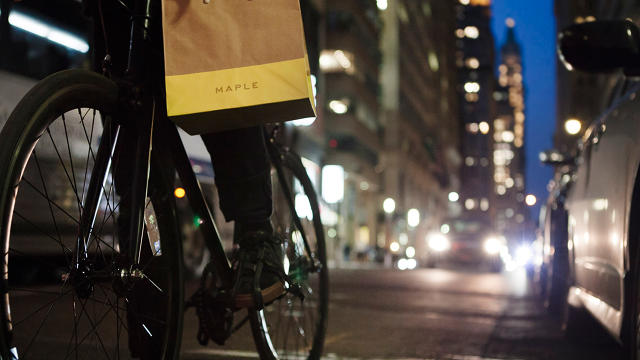
Merkl leans again in his chair, twiddling with a crimson rubber band, and, as overall, wearing brilliant sneakers (“Caleb dresses in ninety five layers of Nike,” Navle as soon as mentioned, while sporting an identical pair of sneakers that Merkl gave him as a gift). Merkl’s concerns appear to be extra on the dimensions of a metropolis plan than a laundry listing. He has the charisma of a high school type president and a passion for evaluating Maple to Chipotle. (Sprig’s CEO and a consultant from Munchery each made similar feedback, unprompted, once I known as to ask about their businesses.) It’s an extraordinarily flattering comparison, and one that your complete genre appears to be placing its hopes on.
As sales at quick food restaurants like McDonald’s decline, Chipotle has led the trend towards higher quality convenience eating places. The chain’s sales grew 27.8% final 12 months, with same-store gross sales increasing 16.eight%. however Chipotle has virtually 50 places in new york by myself, and 1,783 retailers international—an expense that fed on about 5.6% of Chipotle’s earnings ultimate year. “an organization like Chipotle took years to construct into a [billion-dollar business],” Merkl says. “Relative to that we’ll scale extra quick. Relative to any other startup that is launching in 10 cities in a single month, it’s going to be sluggish.”

For now, Maple is only similar to Chipotle within the optimistic imaginative and prescient of its CEO. it is launching with a minuscule footprint, handing over inside a five-minute bike trip of its distribution kitchen within the monetary District. but it is constructing around the vision of serving 100,000 foods per day in the big apple. to put that into viewpoint, Le Bernardin did about 400 foods on its very busiest day, in step with Davies.
The kitchen that surrounds us is more commensurate with Maple’s attainable than its launch truth: walk-in coolers, industrial chillers, fridge-sized programmable ovens with rolling racks. It’s all part of the plan. Sprig maintains its short delivery times by charging extra all through busy occasions, like Uber’s surge pricing. Munchery asks shoppers to complete cooking the foods themselves, this means that it doesn’t have to keep them warm and can ship more right through one route. Maple’s strategy is to set up small local hubs just like the one in monetary District in every neighborhood. however the entire food shall be prepared here, in this kitchen.
The query is whether or not just right food can scale the best way buyers in startups like Maple, Sprig, SpoonRocket, and Munchery hope. challenge capital has taken interest in meals sooner than: assume Starbucks, Blue Bottle, and soften. but, says Semil Shah, who’s an investor in Instacart and DoorDash, “The marginal value of selling an additional piece of device is zero. The marginal value of opening in a brand new metropolis is quite a bit.” when I spoke to GrubHub Seamless CEO Matt Maloney recently, he used to be (unsurprisingly) skeptical concerning the capability of “full stack” restaurants to scale like tech firms. “You’ll see one of the crucial better ideas grow to be great local businesses,” he stated in November. “however i feel it will be difficult for some of these guys to operate on the scale we are actually.”
In some experience, there is no need for Maple to rush to scale. “every person eats lunch,” as Chang puts it. “whether or not it’s the CEO or the assistant to the CEO, most people would somewhat consume well and cheaply.” It’s a massive market, and similar to there is room for each Panera Bread and Chipotle in the same metropolis, there will probably be room for more than one app-restaurant.
however, this early within the sport, not one of the “full-stack” restaurants that have set out with dominance in mind have performed it on more than a regional scale. SpoonRocket has $13.5 million in funding now, however for its first three months after it started in June 2013, it was once just the 2 cofounders, cooking and handing over food themselves. Now it’s in San Francisco, San Diego, and Seattle. Sprig, launched in November 2013 in San Francisco, has raised $57 million and served around 500,000 ingredients. It’s available in San Francisco and Palo Alto, with plans to open in Chicago quickly. Munchery, which has raised $39.9 million due to the fact that opening in April 2011, has opened within the Bay house, Seattle, and big apple, with plans to launch in l. a. and Brooklyn quickly.
Maple has already raised $26 million from buyers including Thrive Capital, primary undertaking companions, and Greenoaks Capital (together with Chang himself), which allows it to launch at full speed. “Can this be an important trade?” Navle remembers an early investor asking. “Then why beat the local chinese restaurant? Why now not beat Chipotle?”
Branding And famous person Sauce
Maple’s business office is technically an condominium, person who has been zoned for both are living and work. there’s still one room shoved filled with the earlier tenants’ bikes and furniture. but except this, the only remnants of the earlier tenants’ occupation are two bookshelves that flank the entrance. “we will be able to ultimately pull down the books and put Maple history in there,” says Merkl. “once we now have Maple history.”
With the selection of well-funded food delivery startups already within the mix, Maple’s strategy is to compete lengthy-term on taste, brand, and story. Merkl’s center of attention on the logo comes thru in the pictures he outlets on his camera roll: photos of early picture shoots in Navle’s apartment, at the back of the scenes of a promotional video, and the many paint chips that the corporate amassed when it was settling on its brand shade.
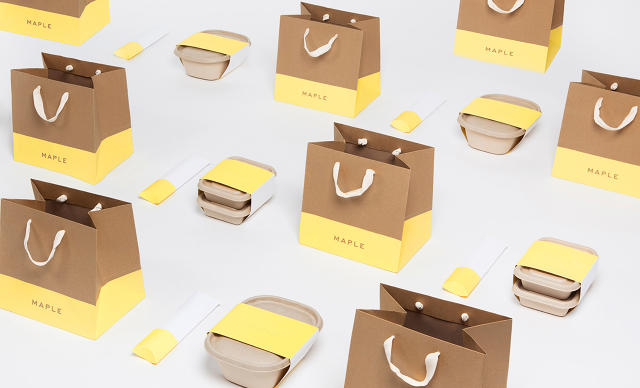
About those paint chips: Maple wanted the emblem to be rooted extra within the thought of culinary excellence than agriculture. Its model crew didn’t want to make everything green just because the food was contemporary. They didn’t need to photo everything in entrance of a barn simply because they plan to source local foods. So might they nonetheless deliver all of that whereas constructing a much less stereotypical model?
“the answer was yellow,” Merkl says. “It conveys a tastiness, a remedy, and also isn’t used by many people. If this business is a hit, it’s vital to be assorted.”
getting to a specific shade of yellow, although, was somewhat of a process.
“have you ever learn The Odyssey?” Greg Hathaway, Maple’s director of name, asks. “have you ever learn it twice?” chimes in Zach Sniderman, Maple’s director of content technique (disclosure: as soon as upon a time, Sniderman and that i labored collectively).
other elements went thru an identical levels of soreness. What size must the packaging be? must it have paper handles or material handles? What used to be the tone of the emails to be despatched out? At one point, the emblem crew went thru what it describes as a hundred bell peppers taking pictures an accent video a good way to run inside the app. after they finally nailed it, a chef knowledgeable them that that they had used an fallacious cutting method. in order that they shot it once more.
regardless of the brand or the logistics, like any restaurant, Maple gained’t work with out just right meals. And that’s the place Chang, a superstar chef with a cult following, is available in. Maple’s major investor, Thrive Capital, offered the group to Chang, who had already been fascinated by food outdoor of the restaurant as the next frontier when he launched a boxed lunch software with coworking space WeWork, as a result of, frankly, “real estate is simply silly presently.” quickly after, he used to be writing them a check (two tests, technically—each he and Momofuku are buyers) and introducing them to his contacts in the restaurant industry, together with Davies.
Maple’s meals can be nothing just like the pork-encumbered menu of Momofuku. It’s specializing in easy, wholesome meals that that you must devour daily (and it hopes you’ll) without shaving years off of your existence. the patron app comprises photographs of each ingredient in each meal, cooks best makes use of antibiotic-free and hormone-free meat, they usually use locally and sustainably sourced components when conceivable. Chang, by contrast, as soon as held it a point of satisfaction that there was only one vegetarian dish at Momofuku Noodle Bar. but even so, it’s hard to overstate Chang’s influence. the brand new Yorker known as him the “one of the vital celebrated chefs in the u . s . a .” in 2008, even before he had accelerated his eating places beyond big apple, opened a line of bakeries, or launched a Momofuku product line. Sprig and Munchery have an identical guarantees to Maple, but they do not have Chang’s recognizable name and reputation for good food.
Maple doesn’t lean too closely on Chang in its advertising and marketing—neither his name nor face are on the homepage—but it surely for sure doesn’t harm to have him on board. “If we would had been like, Caleb and Akshay are launching a meals company,” Merkl says, “nobody would have talked to us.”
Apps To Feed them all
The distribution kitchen is a nondescript, cramped, chaotic hole-in-the wall in the financial District. delivery guys carrying yellow vests filter inside and outside of its unmarked door like bees returning to a beehive.
Maple’s CTO, Dan Cowgill, firstly constructed 5 apps to get food from Maple to the client. When an order comes in, it is introduced to a cooks’ app displayed on tablets within the kitchen. Expediters take the meals from the cooks, put lids on it, put it in a branded cardboard sleeve, and used a 2nd app to check that the order was once carried out. Packers discuss with a third app that tells them, in response to vacation spot, which orders should be sent out in a bundle. They enter the bag’s identification and units it down for a supply particular person to pick out up. When the delivery individual grabs it, he enters the bag identification right into a fourth app, and receives directions for the choicest path to take when shedding off the orders. A fifth app, which the manager of the distribution kitchen makes use of, gives the general view of all of this, to spot the gaps in the process and regulate. All of these apps talk to each other, and all of this action matches inside an area that appears like the size of a city bus.
4 days previous to launch, the machine and apps had been tweaked and streamlined, and the kitchen has delivered 800 meals over two hours—a brand new record. “Let’s just say it’s been a protracted day,” Navle says, patting the again of the kitchen supervisor as he passes.
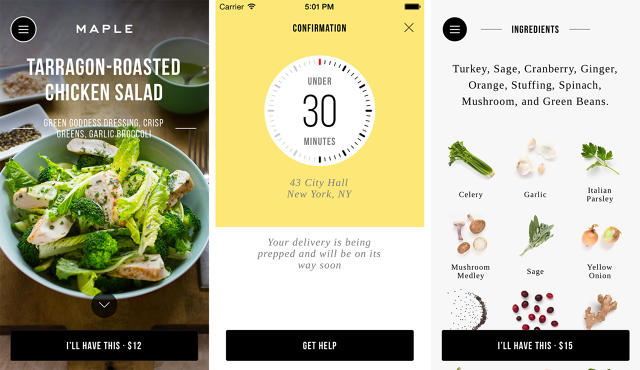
Merkl and Navle have agreed to let me practice a supply guy on a route. His name is Ricky DeBushea, and he was once the primary rent on the delivery group, though the deliveries he’s doing nowadays are for my benefit (he’s on the grounds that been promoted to the kitchen). We walk throughout the angled streets of Tribeca, previous individuals conversing in different languages, television crews, and all the bustle of busy folks out for lunch. We drop meals at the Maple place of business, one of the crucial best places where it if truth be told gets supply all over exams. When DeBushea takes out his tiny, firm-equipped Android telephone and opens the supply app, we can see the supply took 9 minutes. He swipes “order accomplished.” Then we’re on to 99 John boulevard, the place he takes a selfie within 19 minutes of the order (selfies are how the supply teams “full” a pretend order all over the tests). The remaining bag he takes to 2 Gold boulevard. He “drops it” at 22 minutes. On a motorcycle (and with out me tagging along, although he doesn’t say this) he says it would have simplest taken him 9 minutes.
today, the typical supply was once 27 minutes, the median used to be 23 minutes, and the usual deviation was eight minutes. And that was once with a trojan horse in the delivery app that slowed the method down. thus far the fastest that the kitchen has run is 500 meals per hour, which represents an unlikely choice of customers for a startup on its first day. it is four days to launch, and Maple is prepared.
delivery, Day One
after I open Maple’s ordering app on the first day of supply, I’m greeted with the aid of a video montage: Soa huddled with a bunch of chefs (or as a minimum, individuals wearing chef apparel), bright inexperienced asparagus apparently diving into boiling water, and a sizzling prong.
by eleven:51, I’ve made up our minds on Spicy Shrimp Stew.
Sixteen minutes later, I get a call to let me comprehend it has arrived.
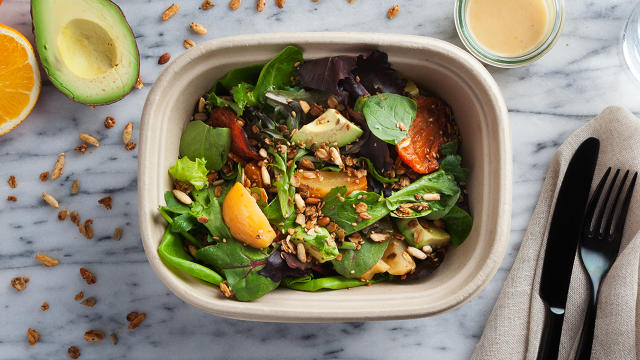
There’s a small crowd of deliverymen waiting within the foyer: one from Chop’t, some other from some unknown, smiley-faced bag establishment. Uber announced past that day that it will start turning in meals from restaurants like Num Pang, Sweetgreen, and Scarpetta. Its competitor, Gett, introduced a similar provider. I spot my Maple delivery individual by way of his recognizable yellow vest.
“Thanks for ordering,” he tells me, on script. “Cheers, have a excellent one.” He fingers me a brown bag with material handles, like the type you get at a flowery division store.
inside of are two plant-fiber containers, tastefully wrapped in blind-debossed branded sleeves adorned with the most effective shade of yellow (106U at a 70% tint, FEE7EE if we’re speaking Hex code).
It’s delicious. And nonetheless piping hot.
quick company , read Full Story
(208)

